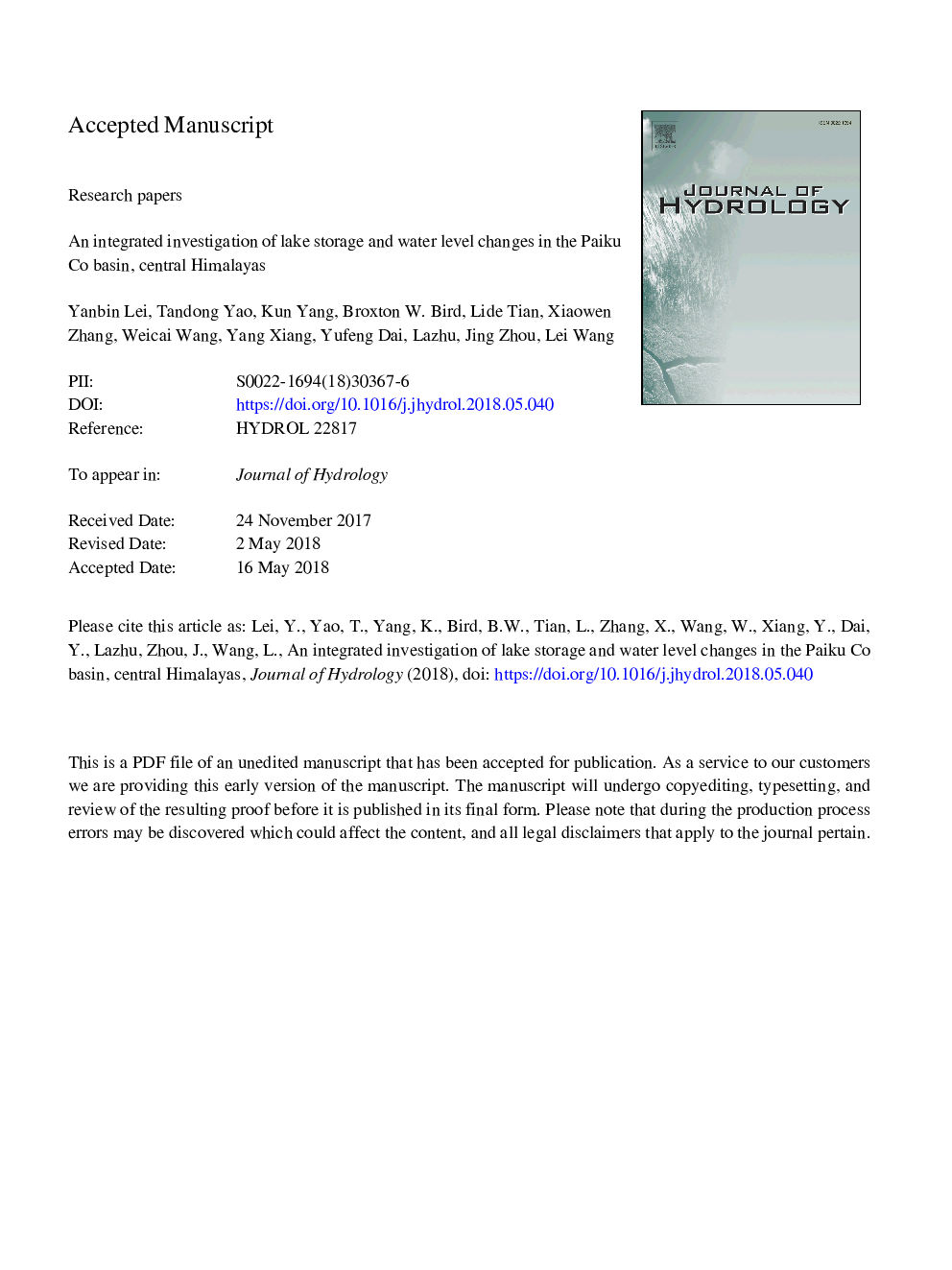| Article ID | Journal | Published Year | Pages | File Type |
|---|---|---|---|---|
| 8894687 | Journal of Hydrology | 2018 | 40 Pages |
Abstract
Since the late 1990s, lakes in the southern Tibetan Plateau (TP) have shrunk considerably, which contrasts with the rapid expansion of lakes in the interior TP. Although these spatial trends have been well documented, the underlying hydroclimatic mechanisms are not well understood. Since 2013, we have carried out comprehensive water budget observations at Paiku Co, an alpine lake in the central Himalayas. In this study, we investigate water storage and lake level changes on seasonal to decadal time scales based on extensive in-situ measurements and satellite observations. Bathymetric surveys show that Paiku Co has a mean and maximum water depth of 41.1â¯m and 72.8â¯m, respectively, and its water storage was estimated to be 109.3â¯Ãâ¯108 m3 in June 2016. On seasonal scale between 2013 and 2017, Paiku Co's lake level decreased slowly between January and May, increased considerably between June and September, and then decreased rapidly between October and January. On decadal time scale, Paiku Co's lake level decreased by 3.7â¯Â±â¯0.3â¯m and water storage reduced by (10.2â¯Â±â¯0.8) à 108 m3 between 1972 and 2015, accounting for 8.5% of the total water storage in 1972. This change is consistent with a trend towards drier conditions in the Himalaya region during the recent decades. In contrast, glacial lakes within Paiku Co's basin expanded rapidly, indicating that, unlike Paiku Co, glacial meltwater was sufficient to compensate the effect of the reduced precipitation.
Keywords
Related Topics
Physical Sciences and Engineering
Earth and Planetary Sciences
Earth-Surface Processes
Authors
Yanbin Lei, Tandong Yao, Kun Yang, Broxton W. Bird, Lide Tian, Xiaowen Zhang, Weicai Wang, Yang Xiang, Yufeng Dai, Lazhu Lazhu, Jing Zhou, Lei Wang,
